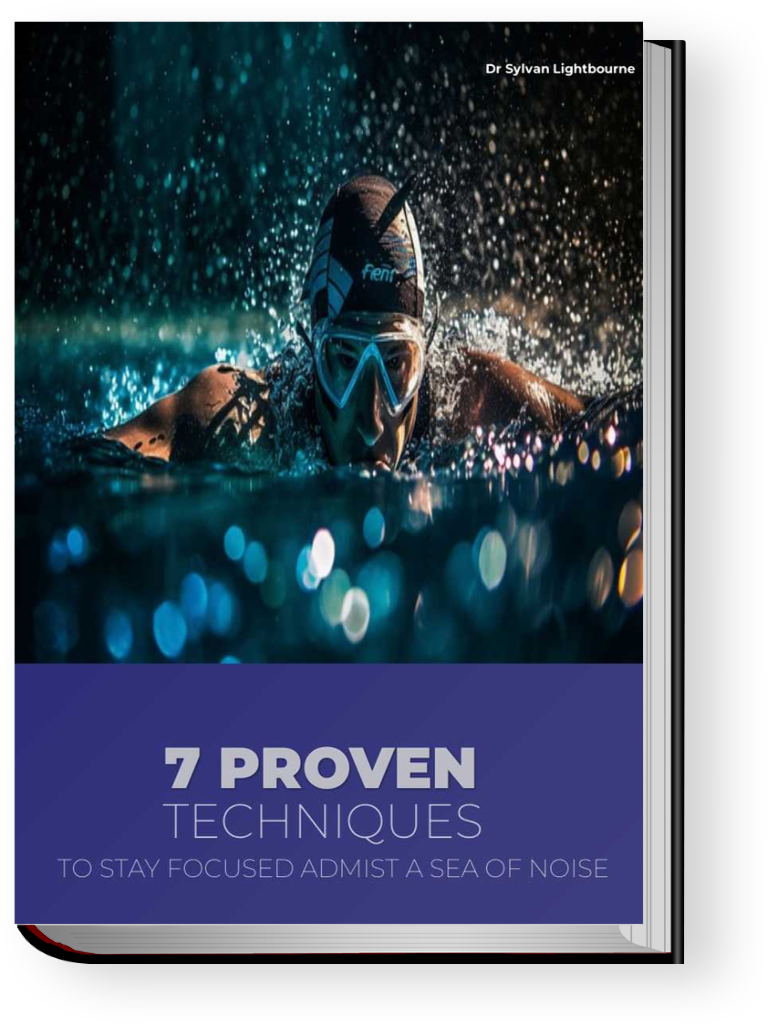
Habits Of Highly Focused Professionals In A Distracted World
SQI Security Entrepreneur Series 39
Unlock Your Superpower: Mastering Laser Focus In A Chaotic World
Maintaining your focus in a noisy and distracted world can be tough. There is so much pulling our attention in every direction that it seems almost impossible to focus on the tasks that are truly important. From social media to text messages and calls and even people stopping by to talk, there is always something that can take our attention away from getting work done.
The result is that we feel like we are behind. When we spend most of our day checking notifications on Facebook or responding to unimportant emails, we find that there is very little time left to get projects and other work done. This can leave us feeling overwhelmed and may drive us to overwork ourselves, while feeling like we get nothing done.
This guidebook is here to change all that. The goal is to learn how to focus our attention and manage our time so we no longer have to stay at work late to finish projects or waste time away from our loved ones. Inside, we will learn that we are the ones in control over our time, not the clock, and that we can actually get things done based on a schedule of our own choosing.
As we work through this guidebook, we will learn the importance of setting goals, minimizing distractions, and even taking breaks. When it comes to focusing, we can work with some of the best time management techniques, including the Pomodoro Method and Eat the Frog to help us get more done.
Slowly, by implementing some of these tips in one at a time, you can start to turn these ideas into habits and improve your focus when getting work done. Stop letting this noisy and distracting world get the best of you. Stop being a slave to the clock and feeling like nothing gets done. Take a look through this guidebook and see the exact steps you can use to reclaim your time and your focus!
The Psychology of Staying Focused
How the Brain Chooses What to Focus On During the day, your brain is always on and trying to gather and take in important information. This means that it has to sort through the noise and decide what it wants to focus on. This is called selective attention and there are two main forms that come with it:
Top-Down
This is also known as voluntary focus and it is one of the best types. With this focus, you pay attention to your goals. You look at the bigger picture and come up with a plan that helps you get there. You know that your phone and emails keep you from reaching these goals so you ignore them. You get stuff done on time, if not ahead of time.
Bottom-Up
This is more of a stimulus-driven focus. When a thought starts to creep up to you or a notification shows up on the phone and you get distracted, this is a sign that you work with bottom-up focus. You have to pay attention to what is going on around you, rather than the thing that deserves the most attention for you.

What’s the Problem Here?
The ultimate goal is to become a top-down thinker. This allows us to focus on what is important and avoid all the rest. Unfortunately, because of our natural instincts, we are often bottom-up focusers instead. Willpower and focus are finite resources, which means that the more you are distracted, the harder it is to get back on track. And since we are bottom-up focusers, every little thing is enough to distract us from our goals. Since most of us can be easily distracted by little things like emails and notifications on our phones, we need to prepare for this. We need to be aware of it and limit the amount of distractions that we have during the day.
Turning your phone off and staying away from social media, for example, can help keep the distractions down so your brain will not even realize they are there and you can focus on your work. There is just too much that is adding to our focus problem and trying to draw our attention away from what is important.
Those notifications, those emails, and those little things have a way of drawing us in, even if they are not that important at all. We think we just give them a few moments of our attention, but it does not take long for them to take over and then we get nothing done during the day
Find Your Willpower
The Pareto Principle The Pareto Principle specifies that about 80% of the consequences in any situation will come from about 20% of the causes. This shows that there is an unequal relationship between the inputs and outputs. It is often referred to as the 80/20 principle.
While this principle was originally applied to the relationship between wealth and population, it can be applied to many other areas including human resources, management, and manufacturing. It can also be applied on a more personal level. Time management is a common use of the Pareto Principle.
Goal Setting and Objectives
To help you get more out of your time at work, you should set goals. This helps you to stay focused better and gives you something more to work towards. Your goal should not be, get more done. It needs to be more focused and specific to help you get results.
The best way to set a goal is to have. SMART Goal. These stand for specific, measurable, attainable, relevant, and time-bound. These can give you the specifics that you need for goals that will get you ahead. They can also be motivational so you keep working on them rather than giving up halfway. You can set goals based on what works the best for you.
Do you want to make it a goal to stop getting distracted at work? Then decide how much time you will allow yourself to check emails and phone calls and set that as the goal. If you have a big project at work, then use the SMART Goals idea to help you stay on track.
Interested in reading more please click below the ebook front cover below to access the full version of this ebook.

